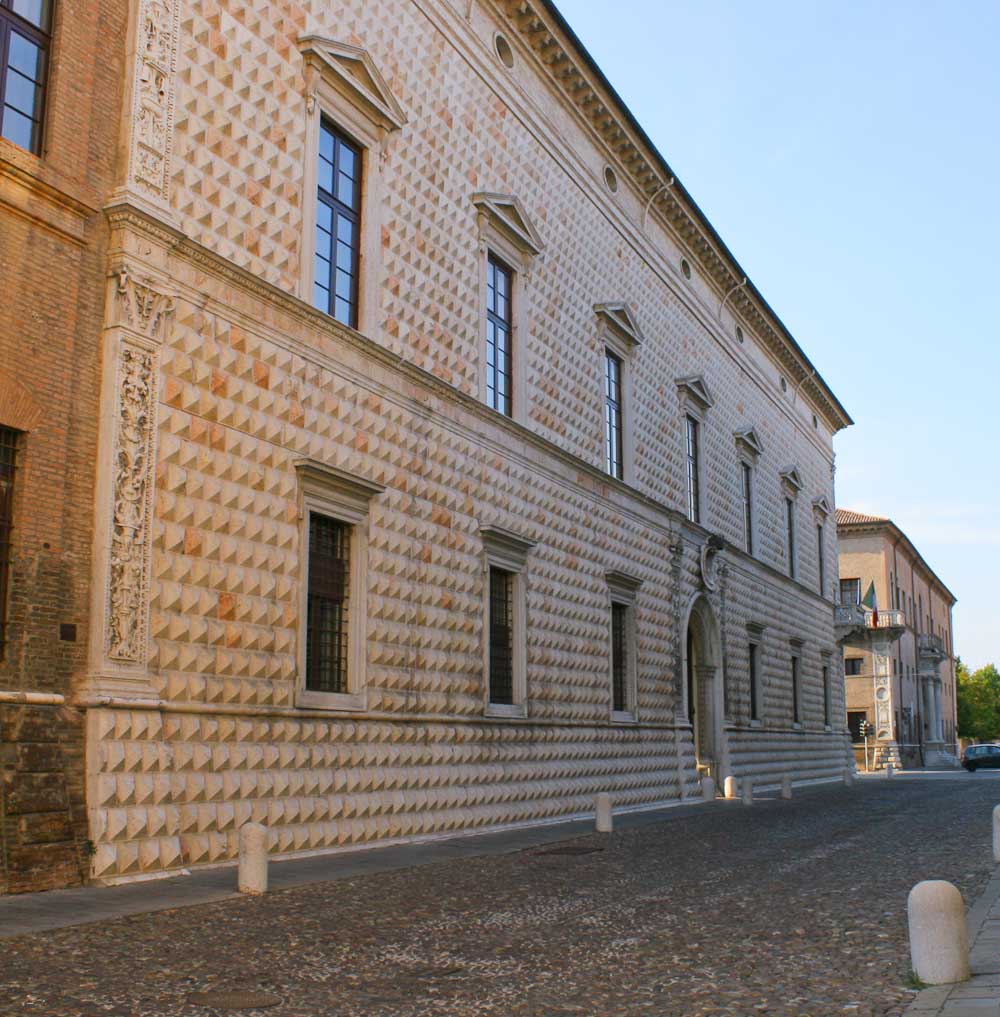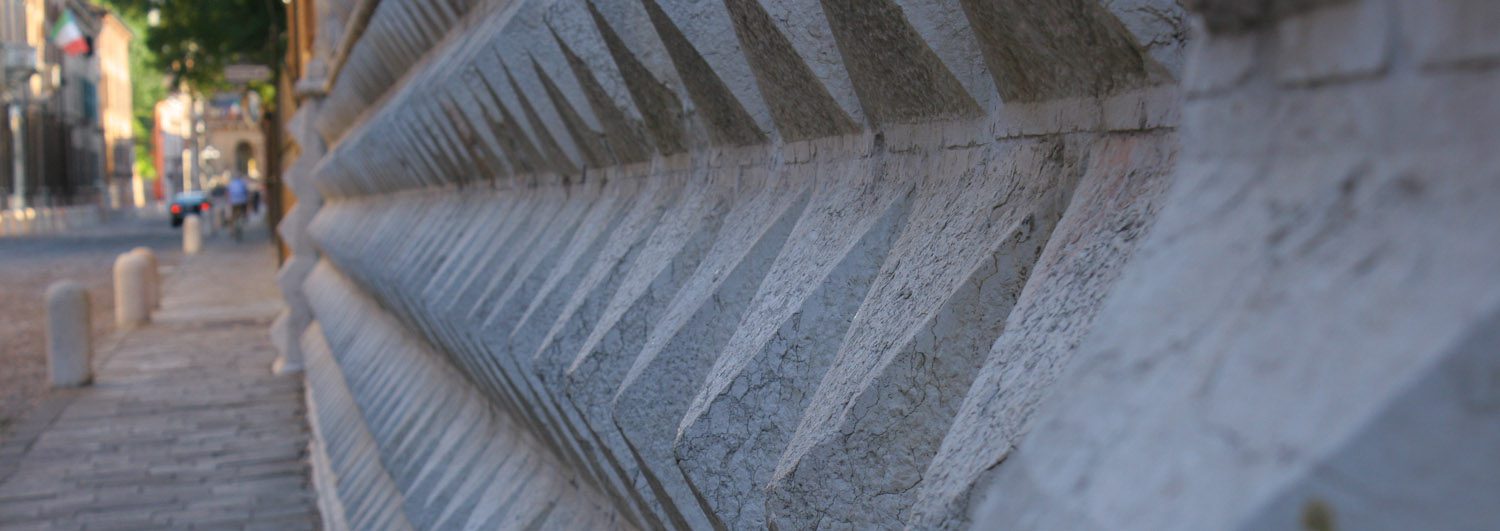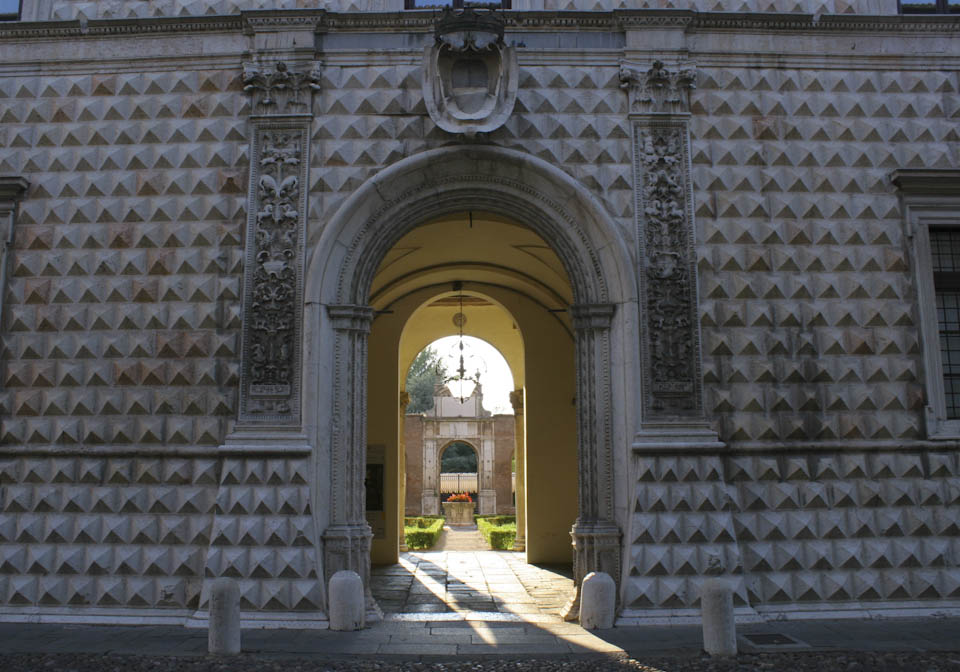The Diamond of Ferrara
At least 8 500 grey marble spikes reflect light off the Diamond of Ferrara. An extraordinary palace in a city famous for its multifaceted Renaissance architecture.
Corso Ercole I d’Este is a long road and it runs in the opposite direction of the cafés, the castle, the cathedral and all the piazze that give Ferrara a warm, relaxed, lively atmosphere. No wonder most tourists give up before they reach the Palazzo dei Diamanti.

The narrow street makes it difficult to get a full view of the diamond of Ferrara.
Hygienic Design
Those who brave the cobbled stones and get past the police headquarters and the row of unassuming, quiet facades will encounter one of the most remarkable and influential examples of Renaissance architecture. Before the other celebrated architect of the area, Palladio, was born, the military engineer Biagio Rossetti was assigned the project of enlarging Ferrara, and contrary to his contemporaries he adopted an urbanistic approach.
Rossetti created a medieval city that could handle overpopulation and the need for hygiene and traffic. The parallel avenues are broad and straight and lined by palaces that are almost austere in their geometry, yet behind the firm exterior there’s almost always a courtyard with green grass, trees and a fountain. Really fascinating.
A Shimmering House
The crown on Rossetti’s work is the diamond of Ferrara. Palazzo dei Diamanti that was finished in 1503. A building he designed upon commission from the brother of Duke Ercole I, Sigismondo d’Este. Diamonds were the Duke’s regal symbol, so Rossetti had marble blocks carved out to decorate the façade. Some say there are 8 500 silver grey spikes while others mention the figure 12 600. I didn’t count, but I could see they were all positioned differently in order to maximize the light reflected off the building, and the locals claim that on cold winter days the building shimmers as if it was made of ice.
As an antidote to the outside chill factor, the building now houses a national art gallery, where they currently show an exhibition of Paris according to Modigliani, Picasso and Dali. And inside the gate there’s the most charming Renaissance courtyard with a cloister and a marble well. That should get the blood running.
Trackbacks & Pingbacks
-
Ferrara – A Goth's Life says:
[…] We’ve had lunch at Il Mandolino, then we visited Estense Castle and Diamond Palace. […]
Leave a Reply
Want to join the discussion?Feel free to contribute!
Leave a Reply Cancel reply
This site uses Akismet to reduce spam. Learn how your comment data is processed.



 Italian Notes
Italian Notes Italian Notes
Italian Notes
I love how the spikes were designed to reflect light, how creative and beautiful.
Ahead of his time, that Rossetti. The courtyard photo draws me in – intriguing!
I’ve never been to Ferrara, nor did I know about the “diamond effect.” I am dying to see a shot of the building in the snow. It sounds marvelous. Your post certainly whets my appetite for a visit. And I hope you toasted XX Settembre!
I guess there are so many captivating towns in that part of Italy that Ferrara gets lost in the hay – which is a great pity. I did of course toast XX Settembre, if only in water;)
Nice article. There’s also an unusual positioning of a balcony on the corner of the palazzo. Legend also has it that there are some real diamonds hidden under one of the stone ‘diamanti’ but no-one knows which one!
Haven’t heard that before. What a fascinating story. Thanks.
So beautiful…
Thanks:)